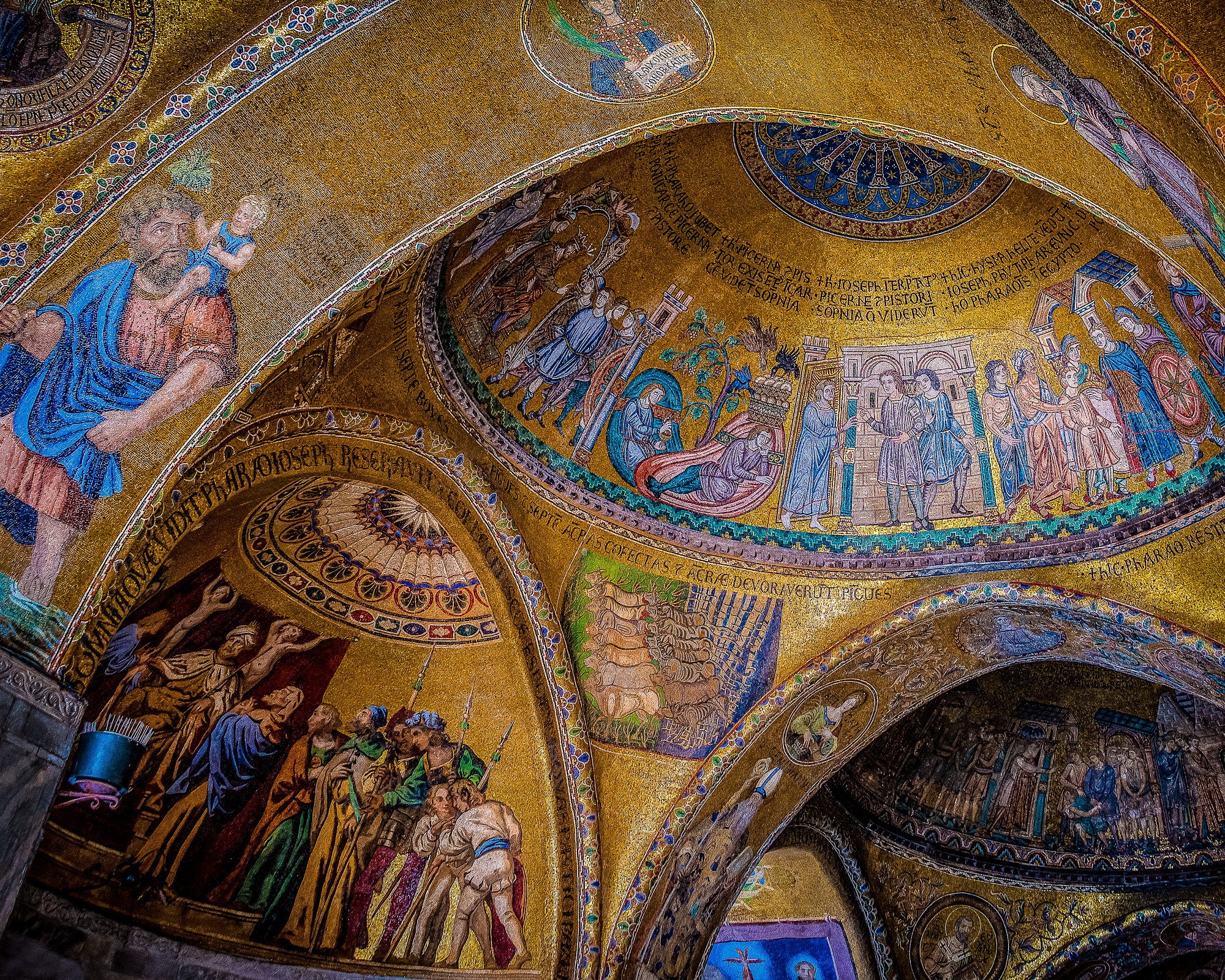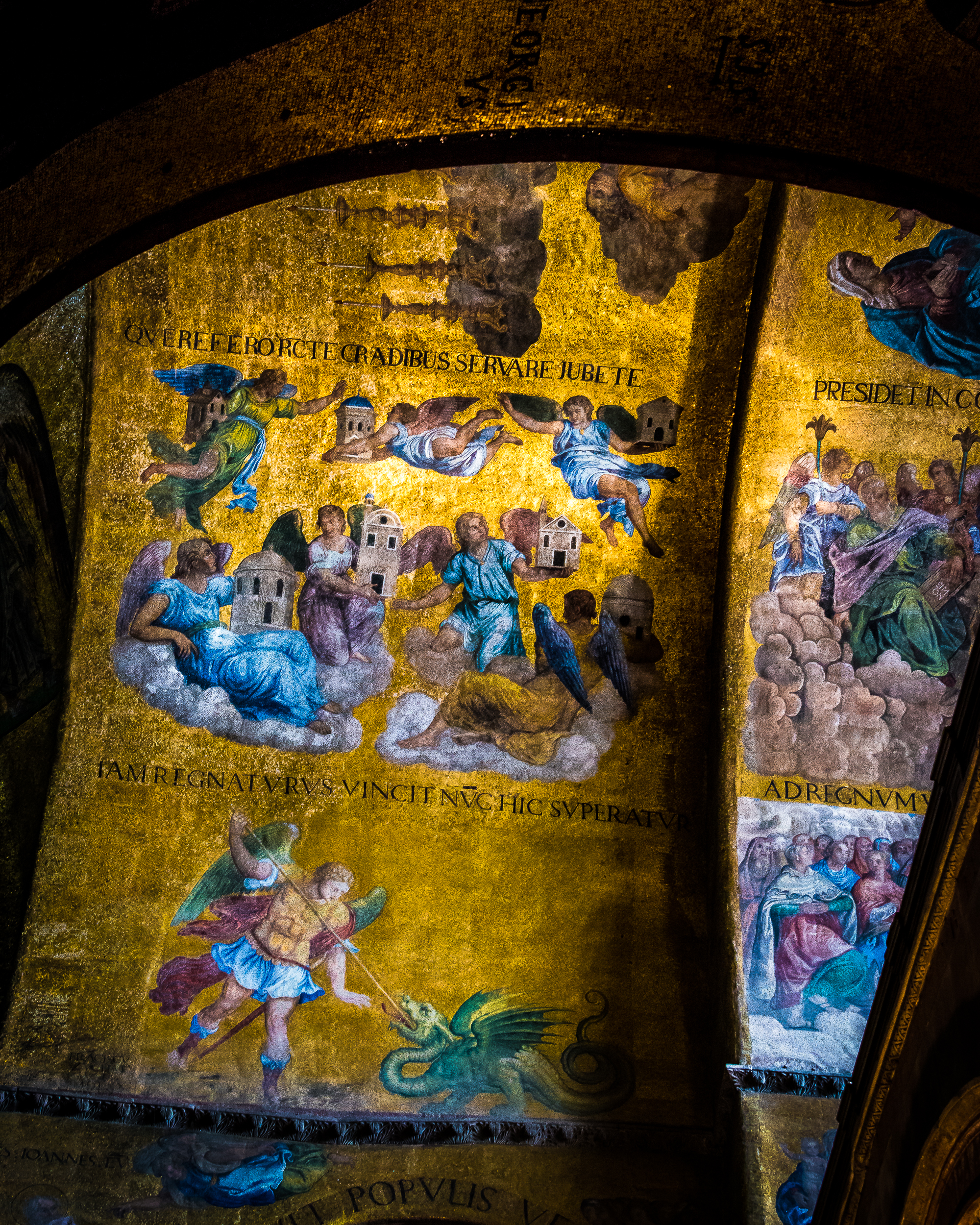“Every once in a while, I’ll tell you more about a particular sestiere, in order of my personal preference for visiting. Today, I give you the sestiere of San Marco. ”
Last week I told you about the Punta della Dogana, and in that description, I mentioned the 'sestiere' of Venice, and I promised to explain what they are about.
A 'sestiere’ is a subdivision of certain Italian towns and cities, like Venice. The word comes from the Italian sesto (‘sixth’), so it is used only for towns divided into six districts. This means that Venice would have six districts…which it does. Very convenient!
Sestiere Overview
Here is a map of the six sestieri (sestieri is the plural of sestiere)..
If you count the colors and names, above, you will actually see seven districts. This is because the Giudecca along the bottom of the map, though technically one of the districts, is not traditionally counted among those of Venice, proper. Nor is the Lido, which would be still lower on the map if it was displayed. And there are many other area of the Venetian lagoon which are not counted in the sestiere, like Murano and Burano.
The 'ferro' of this gondola has representations of the sestiere of Venice. The six rectangular bars protruding to the left represent each sestiere, while the one aimed to the right represents the afore-mentioned Giudecca. The other, fancier protuberances to the left? Unofficial embellishments by the owner.
Each of these districts has its own charms -- some more popular than others, and thus, some are much, much more crowded. But if you want to be where the action is...where the main attractions sit, you may well want to find lodging within these popular sestiere. Here's the thing: many of the tourists who descend on Venice during the day are not actually staying on the Venetian island, and most vanish around 5pm each afternoon to catch a bus back to the mainland.
Every once in a while, I'll tell you more about a particular sestiere, in order of my personal preference for visiting. Today, I give you the sestiere of San Marco.
Introduction to San Marco (Saint Mark)
In this photo, I'll put some focus on the sestiere of San Marco. This photo gives you an idea of the true size of Venice. Though San Marco is one of the smallest of the sestiere, you can see in the photo below that there are many, many buildings in its warrens. For you, that means that there is much to explore!
The sestiere of San Marco is chock-a-block full of marvelous sites, restaurants and hotels. First and foremost is the Piazza San Marco (the most obvious area of the photo, above), where you will find, besides the huge piazza itself, the Basilica San Marco and the Doge's Palace. The Museo Correr, within one of the buildings which form the piazza, is an excellent way for you to find out about the ancient town where you now find yourself.
A side note regarding the Piazza San Marco: there is only one 'piazza' within Venice, given the moniker because of its size; the rest of the public open areas are called either a 'campo' or a 'piazzetta'.
San Marco is also where the beautifully-restored La Fenice opera house is located. Also in San Marco are the large campi of Santo Stefano and Sant'Angelo, which can be seen within the bend of the Grand Canal to the left of the photo.
Shopping San Marco
Shopping? My gosh but there is a lot to buy within the confines of San Marco. From trinkets and hand-fashioned glass, to designer labels of every sort.
My wife, Ellen, has twice purchased frames for her eyeglasses within San Marco. Here is a pair, though, that she did not buy!
The two main shopping streets are Calle Larga Ventidue Marzo, which connects the Piazza San Marco with Campo Santo Stefano, and the interlinked Merceria San Zulian and Merceria Orologio, which lead from the Rialto Bridge to Piazza San Marco.
The Look of San Marco
So, San Marco is where the action is. If you visit Venice and do not travel to San Marco, you really haven't been to Venice, at all. In the photo below, all of what you see along the water in this photo is within the district of San Marco.
A panorama of a good bit of San Marco, taken from the campanile of the church of San Giorgio Maggiore
Here are a few photos that I've taken within San Marco's boundaries.
Digitally painted, hidden-away area of San Marco
And here is the Piazza San Marco, which Napoleon dubbed 'Europe's Drawing Room'.
A view of the massive Piazza San Marco from the balcony of Basilica San Marco
Sleeping San Marco
Our favorite place to stay in San Marco is the Hotel Flora. This hotel is an oasis of tranquility withing the hubbub of San Marco. Here are a couple of photos of this quaint hotel. The windows at the top of the hotel...ours.
Eating San Marco
Our favorite San Marco restaurant? That would be Antico Martini. This excellent restaurant has been in continuous operation since 1720. Here are a couple of photos of Antico Martini, both current and very old.
So, that's the sestiere of San Marco. If you go to Venice, you need to spend at least one-whole day in this essential district. Want to see some of the out of the way places? I'll take you there.
Ciao for now,
Steve
My Twitter feed...
-
Wether going to a sunny beach or the Spanish Steps, everyone wants to know "when should I travel to https://t.co/5QIhgQsP8k
-
Cream cheese and spaghetti. Wow. One of my favorite ingredients to cook with is cream cheese. It http://t.co/xtxGkHwWjI
-
Travel tips http://t.co/Fb1mTkKtjL
-
History In High Heels: How to Conquer Rome in Two Days http://t.co/C9bvxvCc6k
-
-
Crockpot Lasagne Recipe ~ this recipe makes lasagne SO EASY! No need to boil noodles, and it sets up http://t.co/sOuaEPGWjW
-
The Best and Most Complete Guide To Train Travel In Europe — Everything you need to know about rail http://t.co/bphBFp9Zkj
-
15 Tips On How To Pack For Vacation Like A Pro http://t.co/b0IRvHiVem



















